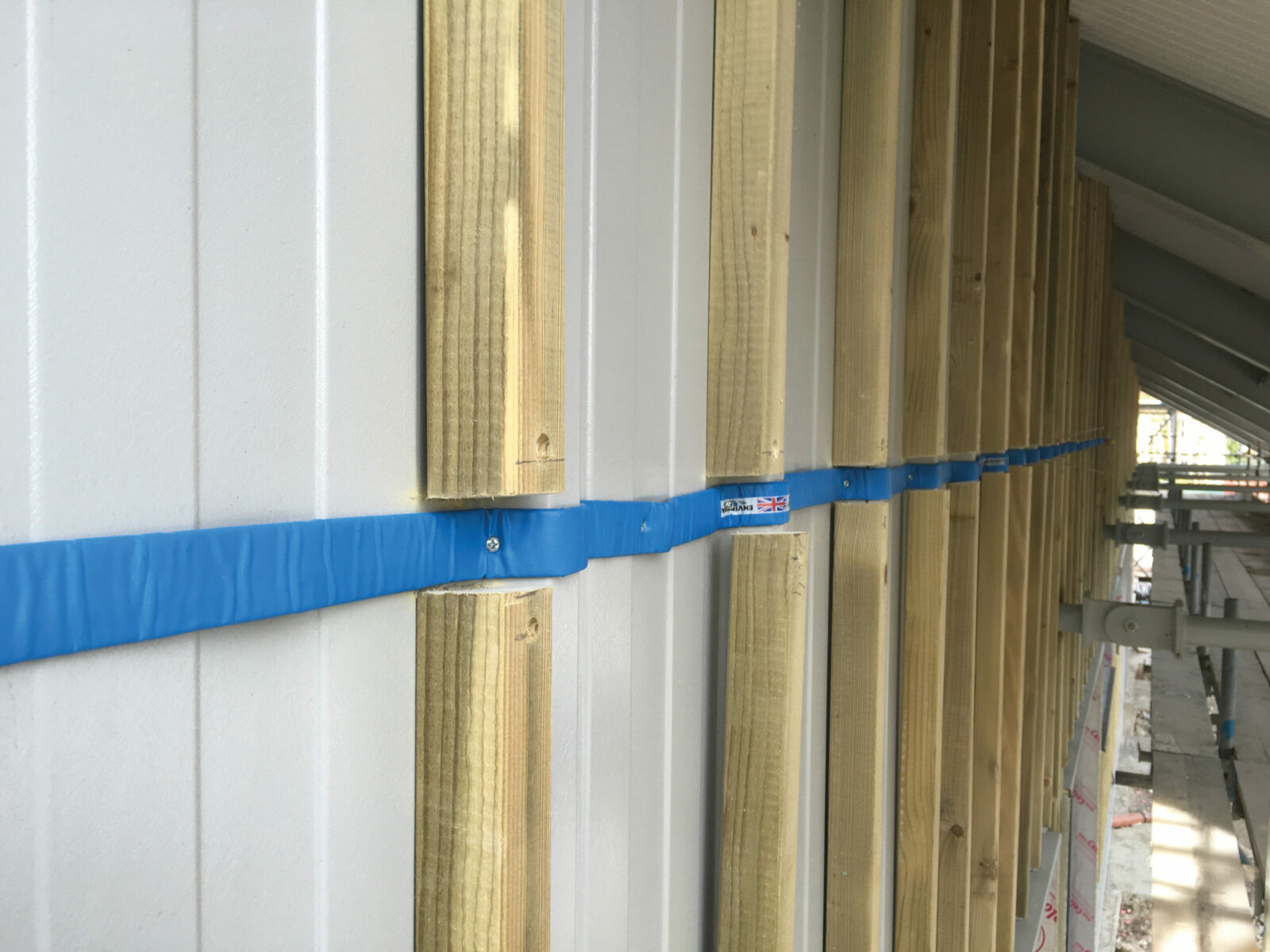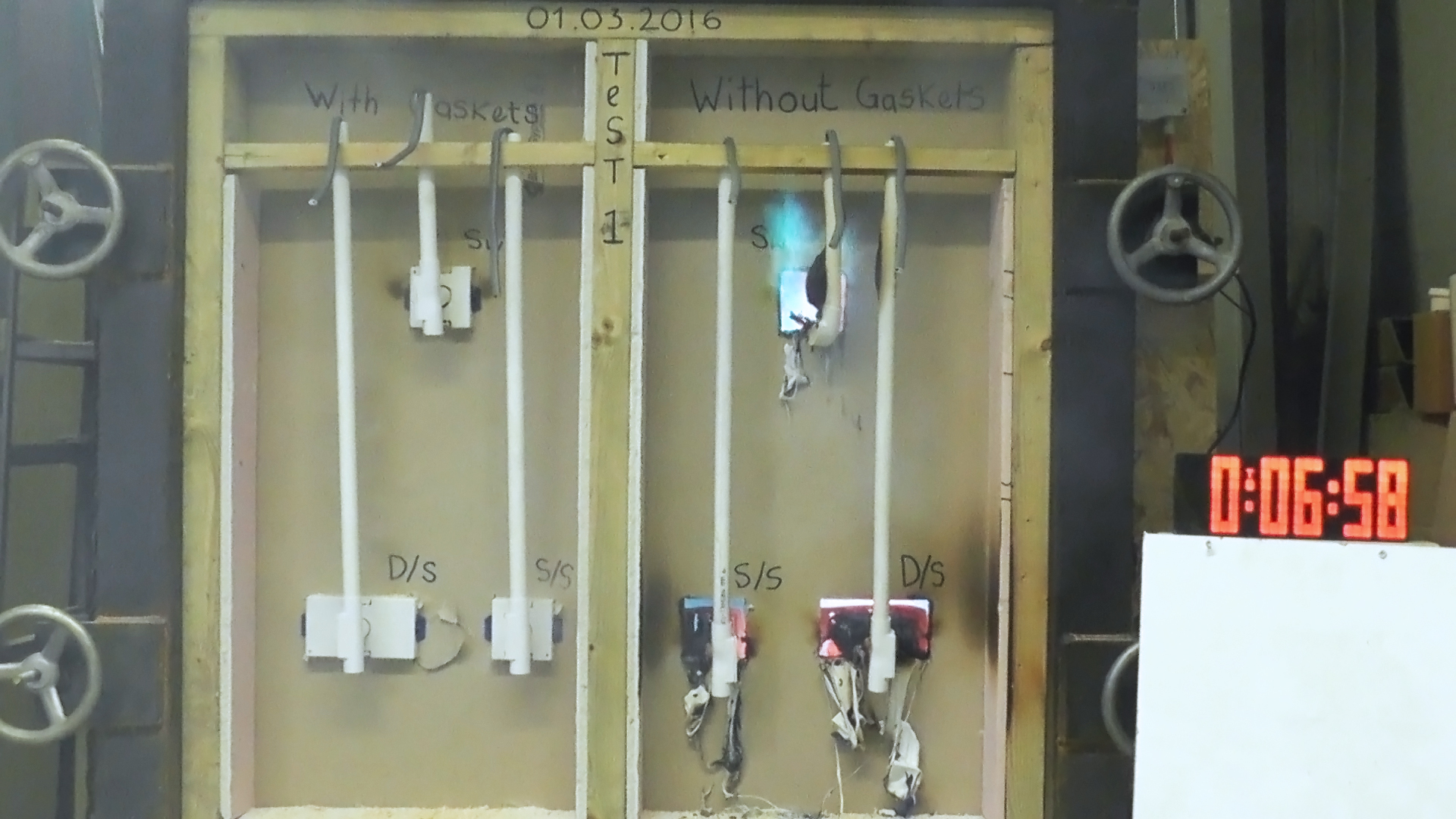We have been working with Martin Roberts in his exclusive publication Property and Home.
Martin Roberts is TV and radio’s best-loved property guru, co-host of BBC’s Homes Under the Hammer and host of Talk Radio’s Home Rule With Martin Roberts, presenter of BBC’s Put Your Money Where Your Mouth Is and How to Survive the Property Crisis, and author of The Property Auction Guide and Teach Yourself Making Money From Property. You can pick up the magazine today at leading newsagents, like WHSmiths and major estate agents throughout the UK.

We were recently asked, as passive fire experts, some frequently asked questions:
What are ‘intumescent’ materials?
Intumescent is an important element of passive fire protection. It reacts when its temperature reaches and exceeds 120°C, and the process results in a soft charring effect on the materials surface. This charring effect insulates the material and reduces the transmission of heat. There is also a small release of water vapour which helps to cool the material to reduce the effects of the heat.

How do intumescent products protect properties in a fire?
The purpose of passive fire protection systems, such as intumescent products, are not to extinguish a fire but instead to help contain a fire to its origin, allowing time for people to evacuate and for the emergency service to safely extinguish the fire. Without passive fire protection systems, a flashover fire could occur within 7-10 seconds into a fire, which is when the structure of the property could be at risk of collapsing.
What sort of intumescent products are available?
There are many intumescent products available, depending on your requirements. We have different intumescent paints for various materials, seals for around doors and frames, thin gaskets to adhere internally to electrical sockets and boxes, collars and boxes to fit around pipes and electrical cables, and many more. We provide a wide range of products to suit many different situations and are always coming up with new products to suit the ever changing construction and building markets.
How and when are intumescent paints applied?
Intumescent paints are applied when you need either 30 or 60 minutes fire protection to a specific wall, door, or ceiling. The paint is applied like normal paint, so it can either be applied using a brush, roller or paint sprayer. A top coat is then applied to seal in the intumescent paint. In some cases, you may require a primer depending on the surface being painting. Our technical team can always help if you’re unsure.
How are fire barriers incorporated into a new build?
Fire Barriers are integral in new builds, especially in timber builds or high rise buildings. Our fire barriers will go in the cavity of the wall or along the party wall or even under floor boards. Fire Barriers will expand in the case of a fire and fill up the gaps to therefore prevent fire from spreading from room to room, engulfing the whole building.
What fire protection measures can be retrofitted to an existing building?
Over the years, Envirograf has helped to protect many historic and listed buildings. Our intumescent paint is available in clear and can be applied over many surfaces, including wood paneling and ornate wood features. We also have a paint which is specially developed for lath and plaster ceilings. We can help to upgrade doors to FD30 or FD60 doors. Also our underfloor fire barriers can be retro fitted. This is to name a few of our products.
How can adhesives, fillers and sealants contribute to fire protection?
The small gaps in the walls or ceilings and the joins of the material that are used is often the first weakness in a fire. By using fire resistant or fire protective adhesives, fillers or sealants ensure that fires can’t escape out of that room through these small gaps and joins. We offer a variety of adhesive, fillers and sealants so you can ensure you have a fire-resistant product for all of your needs.
How can cavity barriers help to protect timber buildings?
Building Regulations require timber buildings to have fire protection measures to prevent fire and its spread. Cavity Barriers are installed into the cavity to prevent the fire from spreading through the cavity into other parts of the building. We have two different types of cavity barriers available. Our FBTS is for horizontal and vertical use. While our CV strip is a thin flexible strip that is for horizontal use.

What’s the history and background of Envirograf?
Founder Derek Ward established the Envirograf brand in 1983, and it has since gone on to become a driving force in fire containment technology. Our reputation as an innovator and developer of passive fire prevention products is widely recognised, and our commitment to product research and development is second-to-none. Derek Ward is still, to this day, managing and running Envirograf at the young age of 88 years old.
How can I find out more about Envirograf products and services?
We love speaking to customers and hearing all about your projects, so we encourage you to give us a call on 01304 842 555. Or alternatively visit our website www.envirograf.com and use our contact us page to ask our advice, or to ask for a catalogue or further product information. Or you can contact us through Instagram, Twitter, Facebook or Linkedin.







